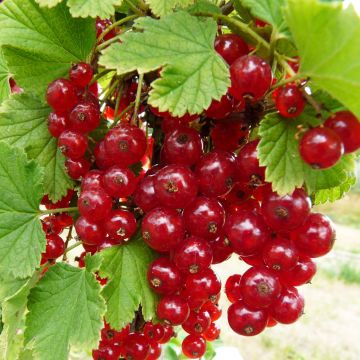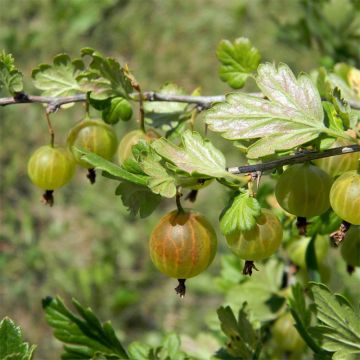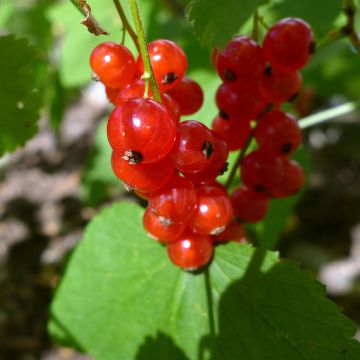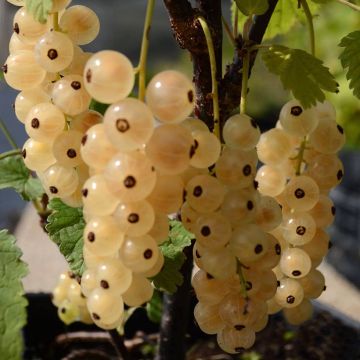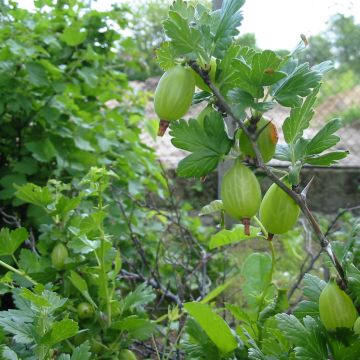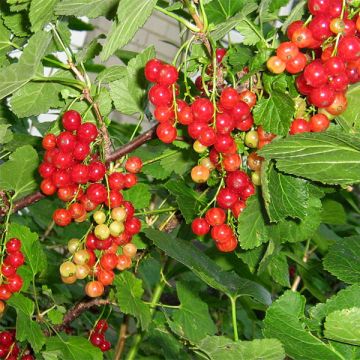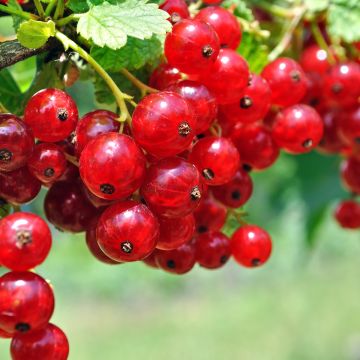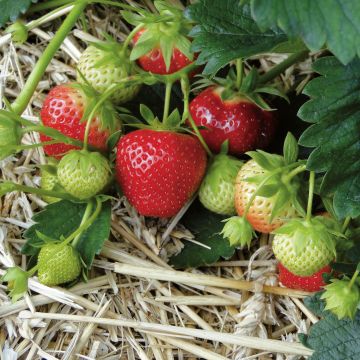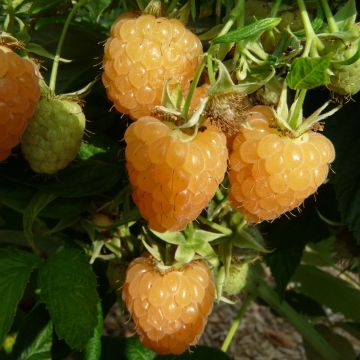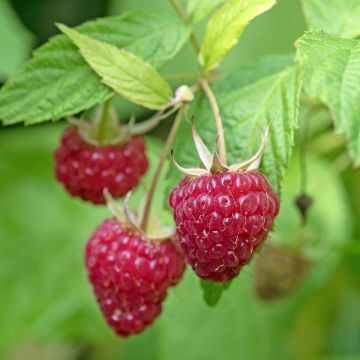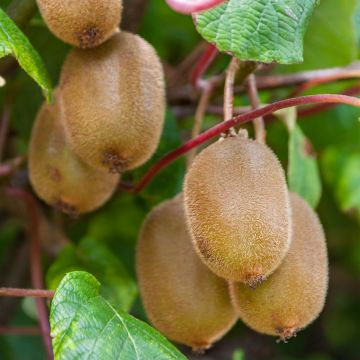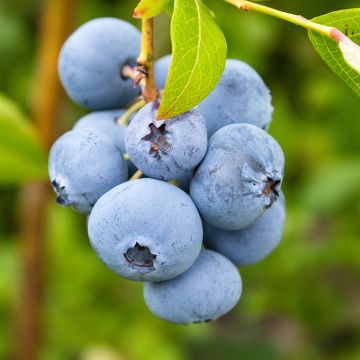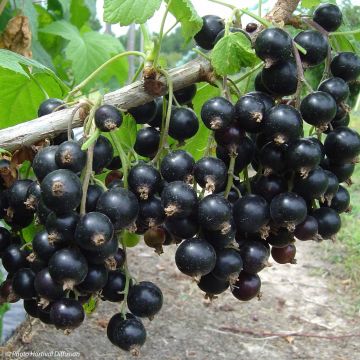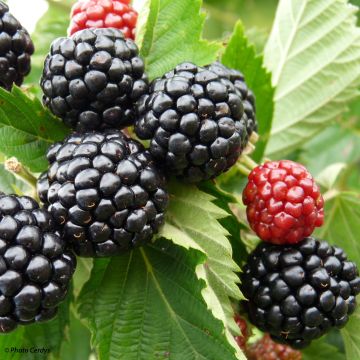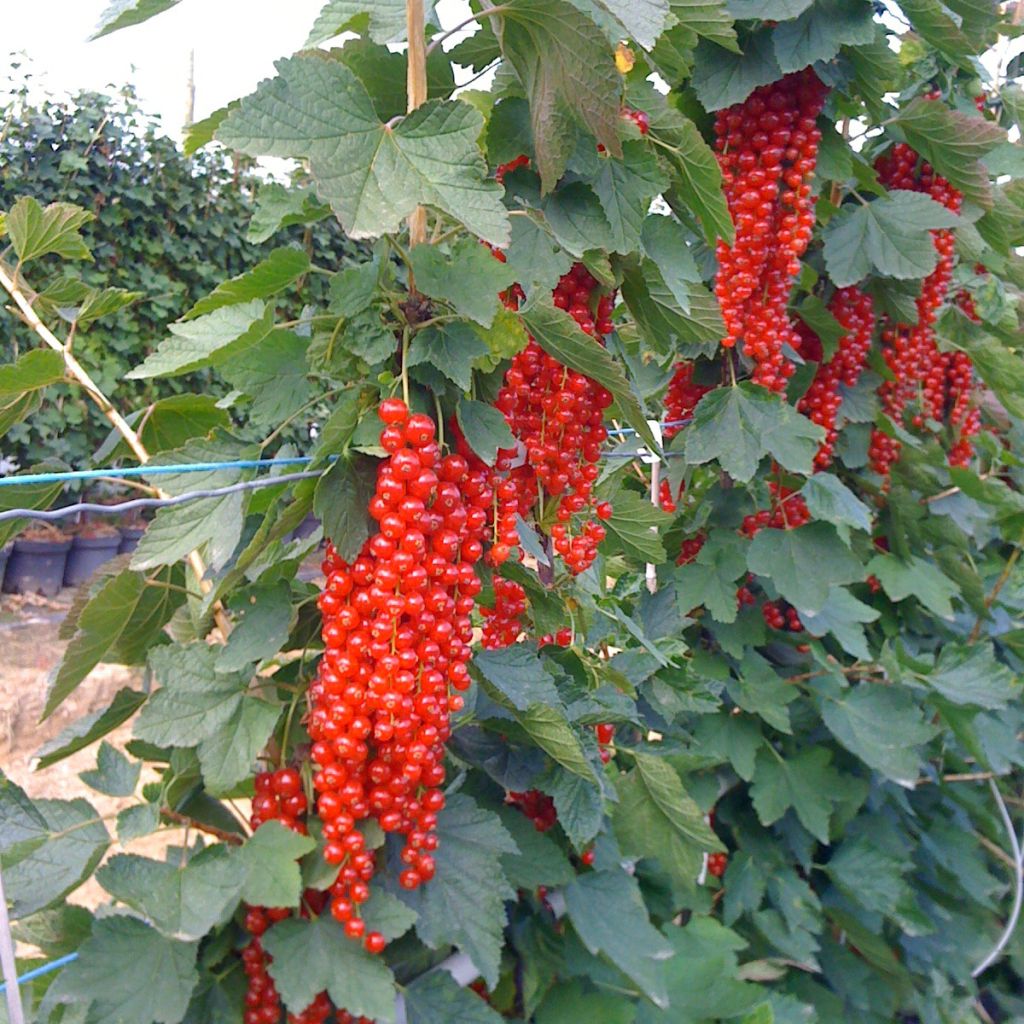

Ribes rubrum Rovada - Redcurrant
Ribes rubrum Rovada - Redcurrant
Ribes rubrum Rovada
Redcurrant
After a little over a year, the gooseberry bush has established well and measures over 1m but still no gooseberries in sight. I hope it's truly self-fertile.
CÉDRIC, 06/06/2025
Special offer!
Receive a €20 voucher for any order over €90 (excluding delivery costs, credit notes, and plastic-free options)!
1- Add your favorite plants to your cart.
2- Once you have reached €90, confirm your order (you can even choose the delivery date!).
3- As soon as your order is shipped, you will receive an email containing your voucher code, valid for 3 months (90 days).
Your voucher is unique and can only be used once, for any order with a minimum value of €20, excluding delivery costs.
Can be combined with other current offers, non-divisible and non-refundable.
Home or relay delivery (depending on size and destination)
Schedule delivery date,
and select date in basket
This plant carries a 6 months recovery warranty
More information
We guarantee the quality of our plants for a full growing cycle, and will replace at our expense any plant that fails to recover under normal climatic and planting conditions.
Description
The Redcurrant Ribes rubrum Rovada is a late variety, offering good yields. Self-fertile, it produces long clusters of red fruits which are easy to pick. These currants are very tasty, fragrant and slightly acidic. It is a variety native to the Netherlands. Easy to grow in non-scorching sun, in well-drained and even poor soil, requiring support. Plant from October to March for a harvest starting in late July.
The redcurrant, also known as Ribes rubrum, belongs to the Grossulariaceae family, like the Gooseberry. It is a plant cultivated for a long time, which grows spontaneously in many temperate regions of the Northern Hemisphere, from Europe to Siberia, to Manchuria. The Currant is a bushy, non-thorny shrub, with a clump-like habit of slightly stiff and sparsely branched stems, with soft wood. This very hardy bush will reach 1.50m (4ft 11in) in all directions. The foliage is deciduous, composed of palmate, lobed and aromatic, medium green leaves.
Flowering occurs in spring, in the form of clusters of small inconspicuous green to brownish flowers, intensely visited by bees. Fruit set occurs mainly on one and two year old branches. The bush is then covered with numerous clusters of small round and translucent berries, containing small seeds. Harvesting takes place as the fruits ripen. The Rovada variety produces long clusters of red fruits, to be harvested from late July. Currants have a red, fragrant and slightly acidic flesh. Whether white or red, currants are low in calories, rich in minerals and trace elements as well as potassium, calcium and phosphorus. They also provide a good source of vitamin C and fibre.
Use fresh currants in jelly or in pastries for tart fillings or sorbet making. In the garden, this bush takes on its full charm when it is laden with its long blood-red clusters that play with the summer light. The pleasure is threefold, visual and gastronomic, but also olfactory when its warm foliage perfumes the garden. It pairs well with white currant varieties, gooseberries, and shrubs that offer a beautiful non-edible fruiti, such as Leycesteria formosa, beautyberries, Nandina domestica and its varieties, Japanese quinces, small-leaved Cotoneaster, Hypericum Magical Beauty, symphoricarpos... For small gardens, or to save space, it is wise to train this currant against a wall or grow it as a standard. Note that the currant can perfectly be part of a terrace orchard, as it performs quite well in large pots, from a depth of around 40cm (15.7in), taking care not to water it with too hard water.
Report an error about the product description
Ribes rubrum Rovada - Redcurrant in pictures


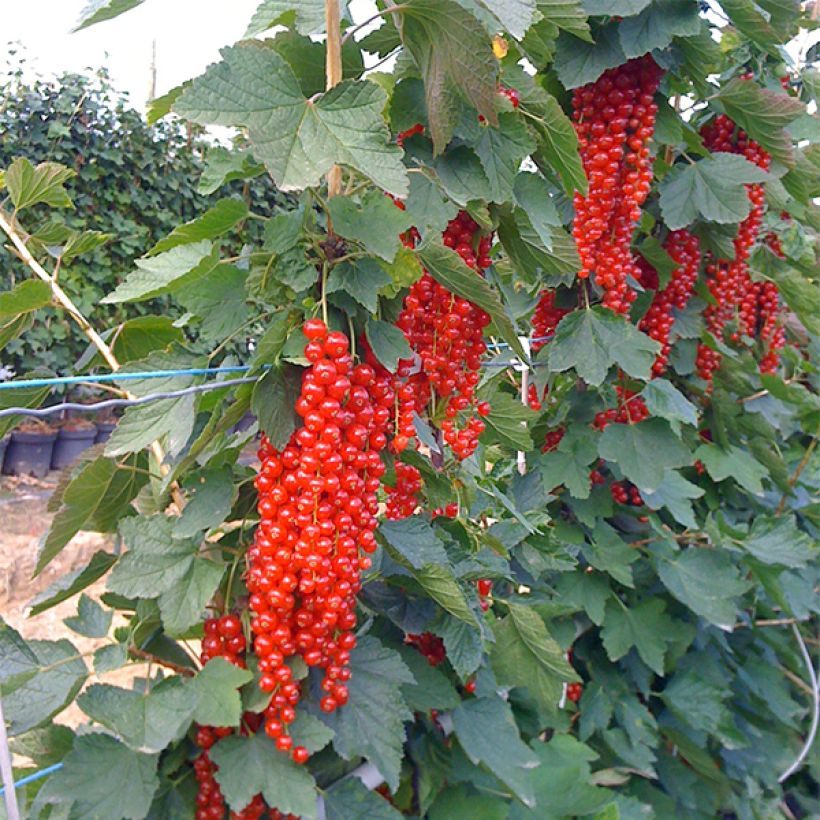

Plant habit
Fruit
Flowering
Foliage
Botanical data
Ribes
rubrum
Rovada
Grossulariaceae
Redcurrant
Cultivar or hybrid
Other Redcurrant bush
View all →Planting and care
Plant redcurrants from October to March. They thrive in ordinary soils, even poor ones, without too much limestone. Currants like well-drained soil, moist but not constantly wet. It dislikes heat and drought so can be planted in the sun in the north but partial shade in the South. Choose a location sheltered from strong winds.
Space the plants 1.20m (3ft 11in) apart in all directions. For bare-root plants, soak the roots for a day to prevent air pockets from forming between the roots and the soil. Dig a hole, incorporate well-rotted manure or mature compost into the soil, place the plant, and backfill. Water thoroughly. Then mulch the soil to keep it cool in summer.
An application of organic fertilizer at the start of vegetation will support fruit production and plant health. It is an accommodating bush, not very susceptible to diseases. It has a few enemies, such as aphids, which can be eliminated by spraying with soapy water or a garlic decoction. In case of powdery mildew attack, spray with Bordeaux mixture. In June-July, protect the harvest with nets to protect against birds. To get rid of raspberry worms, which are sometimes also present on currants, you can sow forget-me-nots along the plantation; they have the reputation of driving them away.
In a currant plantation, as in any plantation, it is important to alternate varieties and species, when space allows: pollination will be favoured, and the spread of epidemics or diseases will be limited.
Planting period
Intended location
Care
-
, onOrder confirmed
Reply from on Promesse de fleurs
Similar products
Haven't found what you were looking for?
Hardiness is the lowest winter temperature a plant can endure without suffering serious damage or even dying. However, hardiness is affected by location (a sheltered area, such as a patio), protection (winter cover) and soil type (hardiness is improved by well-drained soil).

Photo Sharing Terms & Conditions
In order to encourage gardeners to interact and share their experiences, Promesse de fleurs offers various media enabling content to be uploaded onto its Site - in particular via the ‘Photo sharing’ module.
The User agrees to refrain from:
- Posting any content that is illegal, prejudicial, insulting, racist, inciteful to hatred, revisionist, contrary to public decency, that infringes on privacy or on the privacy rights of third parties, in particular the publicity rights of persons and goods, intellectual property rights, or the right to privacy.
- Submitting content on behalf of a third party;
- Impersonate the identity of a third party and/or publish any personal information about a third party;
In general, the User undertakes to refrain from any unethical behaviour.
All Content (in particular text, comments, files, images, photos, videos, creative works, etc.), which may be subject to property or intellectual property rights, image or other private rights, shall remain the property of the User, subject to the limited rights granted by the terms of the licence granted by Promesse de fleurs as stated below. Users are at liberty to publish or not to publish such Content on the Site, notably via the ‘Photo Sharing’ facility, and accept that this Content shall be made public and freely accessible, notably on the Internet.
Users further acknowledge, undertake to have ,and guarantee that they hold all necessary rights and permissions to publish such material on the Site, in particular with regard to the legislation in force pertaining to any privacy, property, intellectual property, image, or contractual rights, or rights of any other nature. By publishing such Content on the Site, Users acknowledge accepting full liability as publishers of the Content within the meaning of the law, and grant Promesse de fleurs, free of charge, an inclusive, worldwide licence for the said Content for the entire duration of its publication, including all reproduction, representation, up/downloading, displaying, performing, transmission, and storage rights.
Users also grant permission for their name to be linked to the Content and accept that this link may not always be made available.
By engaging in posting material, Users consent to their Content becoming automatically accessible on the Internet, in particular on other sites and/or blogs and/or web pages of the Promesse de fleurs site, including in particular social pages and the Promesse de fleurs catalogue.
Users may secure the removal of entrusted content free of charge by issuing a simple request via our contact form.
The flowering period indicated on our website applies to countries and regions located in USDA zone 8 (France, the United Kingdom, Ireland, the Netherlands, etc.)
It will vary according to where you live:
- In zones 9 to 10 (Italy, Spain, Greece, etc.), flowering will occur about 2 to 4 weeks earlier.
- In zones 6 to 7 (Germany, Poland, Slovenia, and lower mountainous regions), flowering will be delayed by 2 to 3 weeks.
- In zone 5 (Central Europe, Scandinavia), blooming will be delayed by 3 to 5 weeks.
In temperate climates, pruning of spring-flowering shrubs (forsythia, spireas, etc.) should be done just after flowering.
Pruning of summer-flowering shrubs (Indian Lilac, Perovskia, etc.) can be done in winter or spring.
In cold regions as well as with frost-sensitive plants, avoid pruning too early when severe frosts may still occur.
The planting period indicated on our website applies to countries and regions located in USDA zone 8 (France, United Kingdom, Ireland, Netherlands).
It will vary according to where you live:
- In Mediterranean zones (Marseille, Madrid, Milan, etc.), autumn and winter are the best planting periods.
- In continental zones (Strasbourg, Munich, Vienna, etc.), delay planting by 2 to 3 weeks in spring and bring it forward by 2 to 4 weeks in autumn.
- In mountainous regions (the Alps, Pyrenees, Carpathians, etc.), it is best to plant in late spring (May-June) or late summer (August-September).
The harvesting period indicated on our website applies to countries and regions in USDA zone 8 (France, England, Ireland, the Netherlands).
In colder areas (Scandinavia, Poland, Austria...) fruit and vegetable harvests are likely to be delayed by 3-4 weeks.
In warmer areas (Italy, Spain, Greece, etc.), harvesting will probably take place earlier, depending on weather conditions.
The sowing periods indicated on our website apply to countries and regions within USDA Zone 8 (France, UK, Ireland, Netherlands).
In colder areas (Scandinavia, Poland, Austria...), delay any outdoor sowing by 3-4 weeks, or sow under glass.
In warmer climes (Italy, Spain, Greece, etc.), bring outdoor sowing forward by a few weeks.































